England’s history is rooted in its landscapes, towns, and age-old structures. Walk through its cathedrals, castles, and ruins, and you’ll come across centuries of craftsmanship, power struggles, and cultural change. These historical places in England are more than preserved buildings. They hold traces of the people who built them, defended them, and shaped their communities around them. Each location offers a different perspective on the nation’s past from Roman engineering to medieval devotion and royal influence. These places continue to reflect the character and spirit of English heritage.
12 Historical Places To Visit In England
Some places in England carry a weight of time you can feel the moment you arrive. These sites have stood through wars, reforms, coronations, and quiet everyday life.
1. Tower Of London
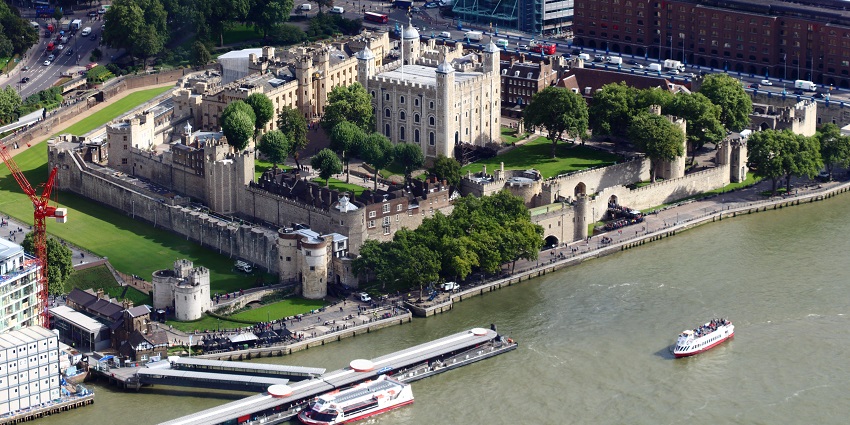
Photo: Rafa Esteve / Wikimedia Commons
You enter through heavy gates once used to hold and guard prisoners. The thick stone walls carry the weight of nearly a thousand years. Built by William the Conqueror in 1078, this fortress served as a royal palace, treasury, armoury, and place of execution. Anne Boleyn was brought here before her death. Inside the White Tower, centuries-old armour and weapons still remain. The Crown Jewels are displayed in a secure vault, watched over carefully. Ravens live on the grounds, and old beliefs say the kingdom will fall if they leave. Walking through the inner ward, you’ll see where the stories unfolded. The Beefeaters, officially known as Yeoman Warders, lead tours filled with real accounts of those imprisoned or executed here.
How To Reach: Tower Hill Underground Station
Timings: 9 AM – 5:30 PM
Nearby Attractions: Tower Bridge, HMS Belfast, The Shard
2. Hadrian’s Wall, Northern England
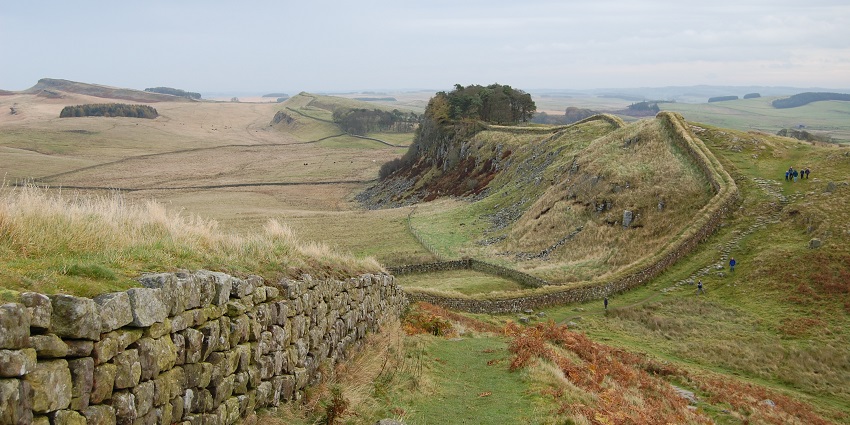
Photo: Steven Fruitsmaak / Wikimedia Commons
A line of ancient stone runs across the hills with no sign boards or barriers, just quiet ground and history underfoot. This is one of the few historical places in England where you can walk alongside original Roman stonework. Built under Emperor Hadrian around AD 122, the wall marked the edge of the Roman Empire. At Vindolanda and Housesteads, you can stand inside Roman forts and see wooden writing tablets, old leather shoes, and the layout of barracks and storerooms. You’re moving through what remains of a working frontier, with little distance between you and the everyday Roman world that once existed here.
How To Reach: Train to Hexham or Carlisle, followed by local buses or car
Timings: 10 AM – 5 PM
Nearby Attractions: Vindolanda Fort, Roman Army Museum, Northumberland National Park
3. Warwick Castle, Warwickshire
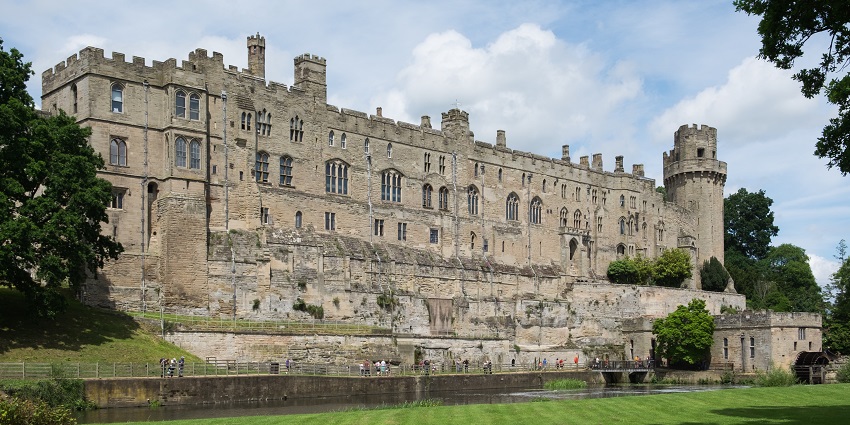
Photo: DeFacto / Wikimedia Commons
Towers rise on both sides, their stone marked by age and weather. Inside, staircases twist up narrow turrets and the halls echo with the weight of the past. As one of the most complete medieval castles in England, it shows how power looked and felt across centuries. Started by William the Conqueror in 1068 and later rebuilt in stone, it became a stronghold for the Earls of Warwick. Armour, weapons, and wax figures show the daily life of both knights and nobles. The Great Hall still holds long dining tables and stone fireplaces. Outside, the ramparts and gardens spread along the River Avon. This is one of those historical places in England where you walk through rooms that still carry the atmosphere of real occupation, not just display.
How To Reach: Warwick Railway Station is 15 minutes on foot
Timings: 10 AM – 5 PM
Nearby Attractions: St. Mary’s Church, Hill Close Gardens, Market Hall Museum
4. Durham Cathedral, Durham
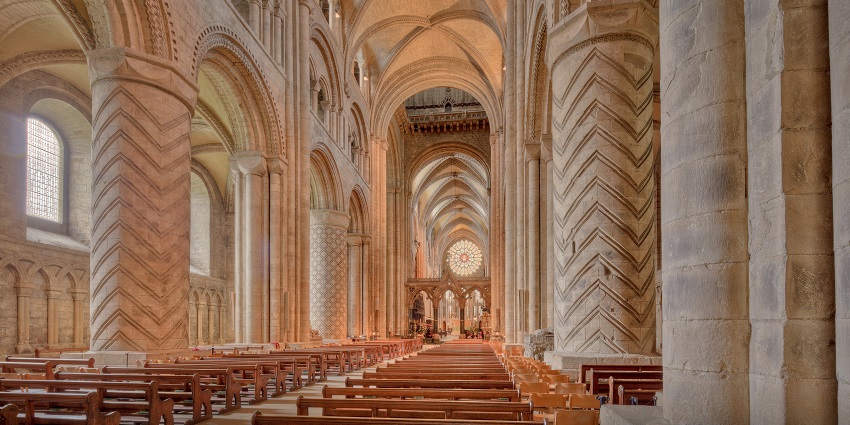
Photo: Michael D Beckwith / Wikimedia Commons
Its massive stone pillars, Romanesque arches, and thick walls create a space that feels unchanged. Inside the cathedral, it’s cool and dim, with light streaming through narrow windows onto worn stone floors. Durham Cathedral was built in 1093 and still stands as one of the most powerful examples of Norman architecture in Europe. It holds the shrine of St. Cuthbert, and the remains of the Venerable Bede lie here too. Monks once lived, studied, and prayed within its cloisters, and the building’s layout has hardly changed since. Unlike many other historical places in England, Durham Cathedral is not just visited; it’s still used and active.
How To Reach: 15-minute walk from Durham Railway Station
Timings: 10 AM – 4 PM
Nearby Attractions: Durham Castle, Palace Green Library, River Wear walks
5. Stonehenge, Wiltshire
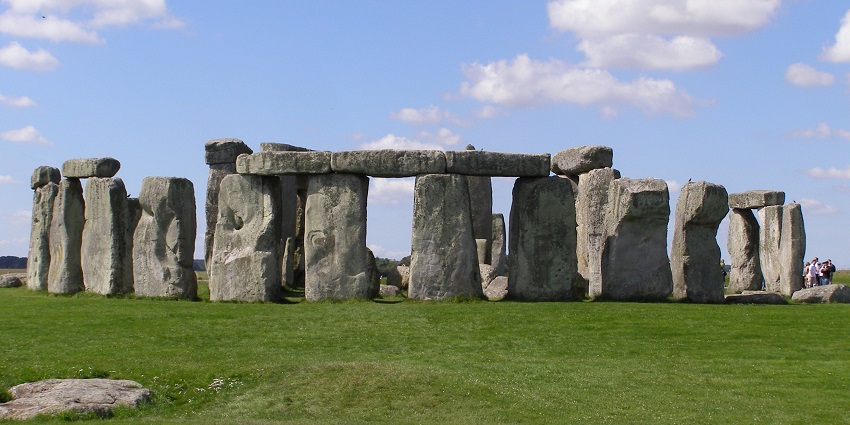
Photo: Way 37118074 / Wikimedia Commons
The last stretch to Stonehenge is often walked slowly, not just because of the open fields but because the stones draw the eye from a distance. Massive and weathered, they sit in a rough circle on a flat plain, surrounded by ditches and burial mounds. Built in stages between 3000 and 1500 BCE, Stonehenge remains one of the most debated historical places in England. Its scale and alignment with the solstices suggest careful planning and deep purpose. The stones themselves were transported over long distances, some from Wales.
How To Reach: Salisbury Station, then Stonehenge Tour Bus or taxi
Timings: 9:30 AM – 5 PM
Nearby Attractions: Old Sarum, Salisbury Cathedral, Woodhenge
6. York Minster, York

Photo: Diliff / Wikimedia Commons
The outline of York Minster appears above the rooftops long before you reach it. Walk past timber-framed shops and cobbled lanes, then step into a vast cathedral with stone pillars rising high and stained glass glowing in every direction. Its construction began in 1220 and took over 250 years to complete and became a centre of religious and political power in the north. The Great East Window finished in 1408, stretches floor to ceiling and holds scenes from the Book of Revelation. In the undercroft below, you can see parts of the Roman fortress and earlier church foundations. Of all the historical places in England, few combine such scale, detail, and continuous use. Choir rehearsals, daily services, and restoration work carry on inside, giving the building a rhythm of life, not just memory.
How To Reach: 15-minute walk from York Railway Station
Timings: 9 AM – 4 PM
Nearby Attractions: Shambles, Jorvik Viking Centre, Clifford’s Tower
7. Windsor Castle, Berkshire
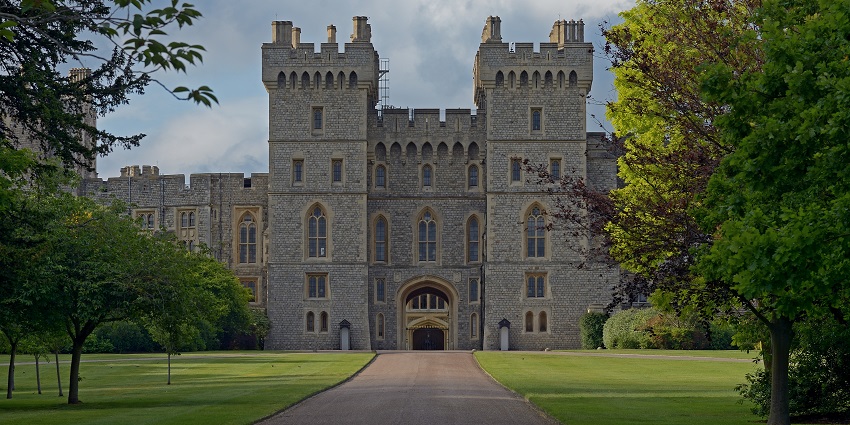
Photo: Ввласенко / Wikimedia Commons
The castle rises in layers with arched windows, flag-topped towers, and steep steps leading toward the Round Tower. Built in the 11th century by William the Conqueror, Windsor Castle has served as a royal residence since. Monarchs lived here during wars, weddings, and mourning. The State Apartments are filled with tapestries, portraits, and carved ceilings that show the tastes of kings through the ages. In St George’s Chapel, ten monarchs are buried, including Queen Elizabeth II. This isn’t a closed monument; it’s still a working palace. Events, ceremonies, and state visits take place in the same halls visitors walk through. Out of all the historical places in England, few are still in use at this level.
How To Reach: Windsor & Eton Central or Riverside Stations, both 10 minutes away on foot
Timings: 10 AM – 5:15 PM
Nearby Attractions: Eton College, Windsor Great Park, Thames River cruises
8. Bath Roman Baths, Bath
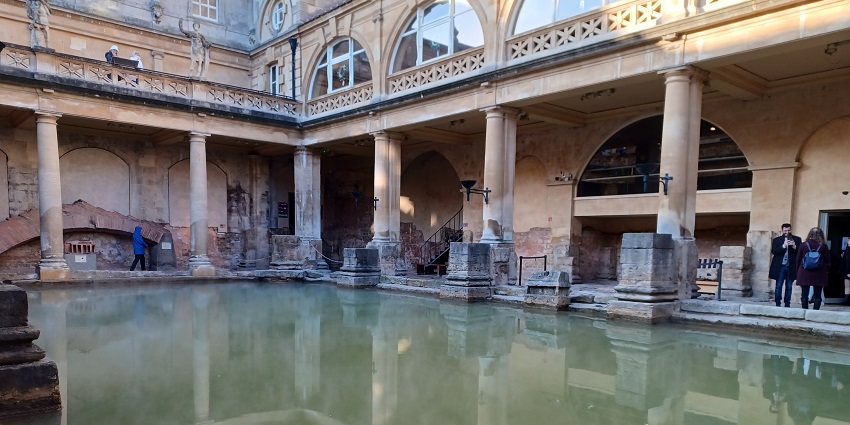
Photo: Simon Burchell / Wikimedia Commons
Steam hangs lightly over the green water as you step into the courtyard of the Roman Baths. The pillars and statues above the pool feel almost untouched, but everything here is part of a carefully preserved Roman complex built nearly 2,000 years ago. Natural hot springs feed the baths, just as they did when Romans believed the waters were sacred. Channels beneath the site still carry hot water into the pools. The temple to Sulis Minerva stood nearby, and you can see its remains in the museum, along with coins, curse tablets, and mosaics found on-site. A walk through the narrow passages and chambers reveals how sophisticated Roman engineering was. Among all historical places in England, this is one where water still flows exactly where it once did, guided by Roman design.
How To Reach: 10-minute walk from Bath Spa Station
Timings: 9 AM – 6 PM
Nearby Attractions: Bath Abbey, Royal Crescent, Thermae Bath Spa
9. Canterbury Cathedral, Kent
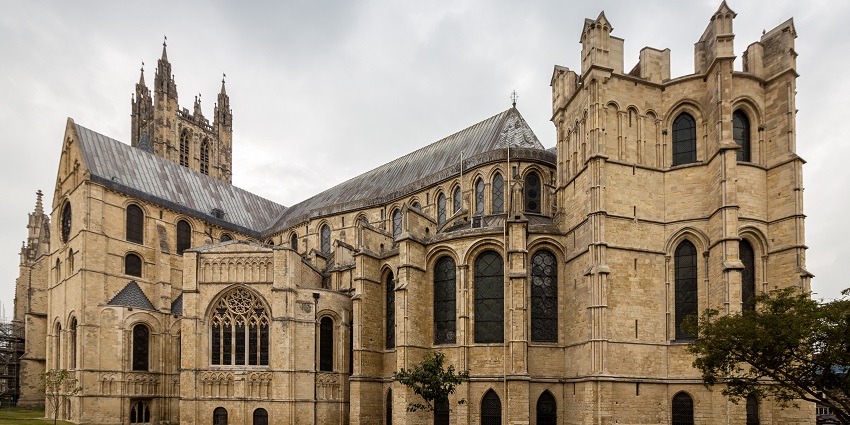
Photo: Rafa Esteve / Wikimedia Commons
You pass through the city’s arched gateway and walk into a courtyard where the cathedral towers overhead. Its stone has darkened with age, and the tall windows catch the changing light. Founded in 597, the cathedral was rebuilt after a fire in 1174 and has remained active ever since. In 1170, Archbishop Thomas Becket was murdered here, and the spot where he fell is marked inside the building. That moment turned Canterbury into a site of pilgrimage. The stained glass windows above show the pilgrims’ stories, along with biblical scenes and portraits of saints. The crypt is cool and quiet, with old columns and low arches that have stood for centuries. This is one of the historical places in England where services continue daily. Bells still ring, the choir still sings, and the space still serves its purpose.
How To Reach: Canterbury East or West Station, followed by a 10-minute walk
Timings: 10 AM – 4 PM
Nearby Attractions: St Augustine’s Abbey, Canterbury Roman Museum, Westgate Towers
10. Oxford’s Bodleian Library, Oxford
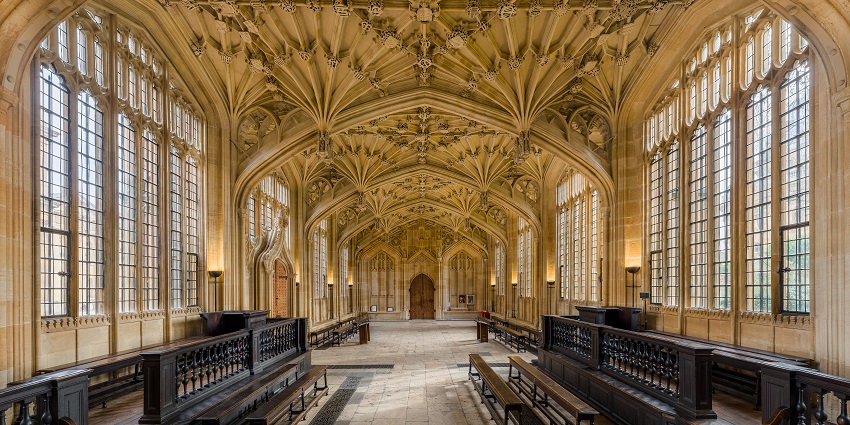
Photo: Diliff / Wikimedia Commons
You walk through a stone archway into a courtyard lined with tall windows and carved tracery. The Bodleian Library has been at the centre of learning in Oxford for over 400 years, though parts of the site date back to the 15th century. Duke Humfrey’s Library, with its wooden shelves and vaulted ceilings, still holds volumes bound in leather and parchment. The Divinity School next door, built in the late 1400s, has a fan-vaulted ceiling that draws your eyes up with every step. This isn’t a replica of the past, it’s a library that still collects, preserves, and circulates books daily. Students use the reading rooms, scholars request rare texts, and public tours offer a glimpse into spaces normally reserved for study. Among historical places in England, the Bodleian is still working as it always has, with rules, silence, and the scent of old paper in every corner.
How To Reach: 15-minute walk from Oxford Railway Station
Timings: 10 AM – 5 PM
Nearby Attractions: Radcliffe Camera, Christ Church, Ashmolean Museum
11. Lincoln Castle, Lincoln
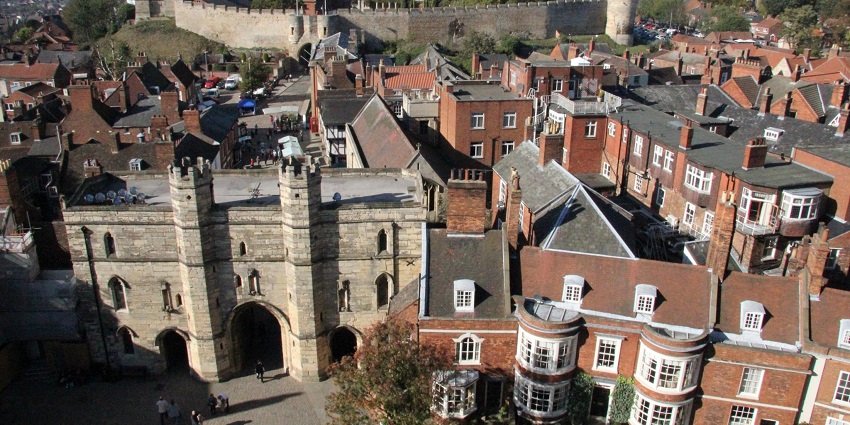
Photo: Karen Roe / Wikimedia Commons
The entrance is wide, the gate thick with iron, and the ground inside opens into a grassy space surrounded by high stone walls. Built in the 11th century by William the Conqueror, Lincoln Castle was placed over a former Roman fortress. The outer walls still form a complete circuit, and you can walk the full length of them, with views over the city and beyond. Inside, a glass vault protects one of the four surviving originals of the Magna Carta. Below it, the accompanying Charter of the Forest is also on display. The old Victorian prison sits within the grounds, preserved with cells, corridors, and a chapel where prisoners once sat in isolation. Out of all the historical places in England, this one brings together medieval authority and 19th-century justice in one location.
How To Reach: 15-minute walk from Lincoln Railway Station
Timings: 10 AM – 5 PM
Nearby Attractions: Lincoln Cathedral, Steep Hill, Museum of Lincolnshire Life
12. Dover Castle, Kent
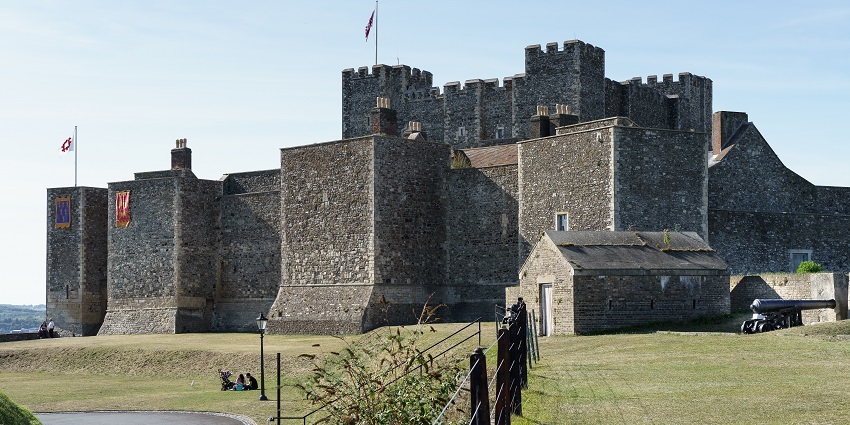
Photo: Neptuul / Wikimedia Commons
As you reach the top of the hill, Dover Castle appears with its massive keep rising above the cliffs. It was built in the 12th century and was later expanded to defend against threats from across the English Channel. The underground tunnels were used during the Napoleonic Wars and again in World War II as a command centre and hospital. Inside the great tower, rooms have been restored to show how kings once lived here with tapestries, carved furniture, and stone fireplaces. Outside, the views stretch across the sea. You can walk along the battlements, step into medieval chapels, or explore the deeper tunnels carved into the white cliffs. Few historical places in England show as many layers of military defence in one site. The castle holds centuries of strategies, sieges, and signals, all still visible in the layout, the stone, and the distant lookouts facing the water.
How To Reach: Dover Priory Station, then local bus or 25-minute walk
Timings: 10 AM – 5 PM
Nearby Attractions: White Cliffs of Dover, Roman Painted House, Dover Museum
From windswept Roman walls to cathedrals still echoing with song, these historical places in England hold more than just stories, they hold time itself. Each site brings you closer to the people who shaped the country’s past, whether through power, belief, defence, or discovery. See worn steps leading to castle towers, and stone walls that once divided kingdoms. Visiting them is about standing where history happened. Plan your journey with TripXL and walk slowly through England’s past.
Cover Photo: Scott Wylie / Wikimedia Commons


 WhatsApp
WhatsApp
 Twitter
Twitter









